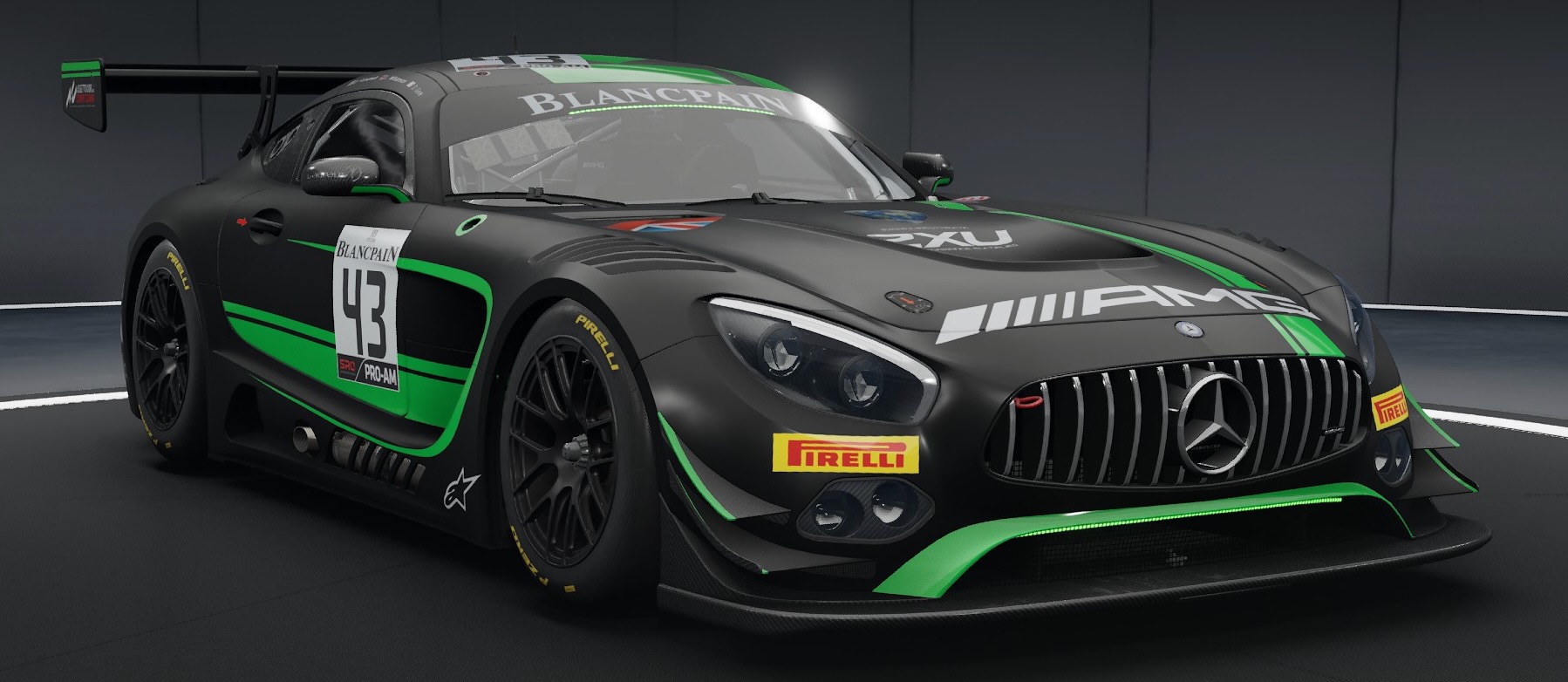
Simracing
- 11 mins“It is amazing how many drivers, even at the Formula One Level, think that the brakes are for slowing the car down.”
– Mario Andretti
After spending way too many hours behind the wheel of a racing sim, I decided to collect my thoughts and write out a few of the techniques and strategies I use to stay competitive. I generally race GT3 cars (mostly the AMG🔥 and BMW), with occasional forays into open wheelers like the Exos 125.
If you love GT3 racing, there really isn’t a better sim than Assetto Corsa Competizione, with its multi-point simulation of tyre physics and laser-scanned tracks. For a more versatile and customizable sim, Assetto Corsa is like the fun older cousin, its physics and graphics engines are a bit more dated, but it still holds up very well.

I’ll be adding more stuff when I think of it, and the topics here aren’t listed in any particular order, so feel free to skip around.
Technique
This is perhaps the most critical aspect of sim racing, and also the hardest. It often takes hundreds of hours of grinding away and trying new things to figure out what works. Your technique is somewhat like your signature, its highly personal and only works for you.
Developing a good technique is a rather complex blend of spatial awareness, driver psychology and understanding the car and track.
Spatial awareness
If you want to race competitively without getting kicked out of every session, you need excellent spatial awareness. Spatial awareness requires you to predict, within some confidence interval, the actions of other drivers. I contend that there is no better place to learn spatial awareness than a Monza open lobby in Assetto Corsa. This is a lobby where you see skills at extreme ends of the spectrum. The drivers near the back can barely make it through a few corners without crashing, and the drivers at the front have already lapped the entire field twice by lap 10.
When you’re approaching (or being approached) by another driver, try to quantify the skill level of the driver. Lower skill drivers need to be treated like live cannons, and you need to always be ready for them to brake unexpectedly, or lose control and take you out in the process. Higher skilled drivers don’t require you to worry about unexpected behavior, but you will need to perfect the art of making your car as wide as possible to (legally) block them from overtaking.
Spatial awareness in racing is also related to reaction times. There isn’t much use of being aware of something if you can’t respond to it. Learning what to do in racing scenarios is purely based on practice and instinct, as there isn’t enough time to think through the situation. You can however, improve your reaction time with some online training tools, like the human benchmark test. I get around 232 ms, which is faster than the median (273 ms), but slower than racing drivers (around 200 ms).

Driver psychology
A large portion of racing is psychological. You need to be able to apply pressure on other drivers. Something as simple as driving behind another car and making yourself as large as possible in their mirrors is often enough to elicit a mistake from them. I suspect this is caused by them panicking, thinking that they are about to be overtaken. In this panic they drive the car beyond their skill level, which causes them to make a mistake, or even lose control and crash. Use this to your advantage.
However, be careful with the strategy, as there does seem to be a sharp drop off in its usefulness with driver skill level. Experienced drivers, even if they are slower than you, will actually use this as an opportunity to get you to make a mistake. They often do this in tight corners by apexing at slower speeds than race pace, leaving you to brake awkwardly into the corner entry, disbalancing your car and leaving you vulnerable at corner exit. For maximum impact, if you’re the leading car, do this before a long straight and enjoy watching the car behind fall further back every second (Note that while this is technically legal, it can very much fall into a gray zone depending on how aggressive you are).
Understanding the car and track
Each car, even within the same racing class, is unique. The rear-engine Porsche handles nothing like the front-engine AMG. A very common question on most beginner racing forums is asking which is the “best car”. The reality is that there is no such thing.
I, for example, love the rather understeery nature of the AMG and BMW, whereas if you put me in the oversteery Porsche I more often than not end up pointing the wrong direction. The placement of the engine is the strongest factor affecting the handling of the cars, with front engine cars being prone to understeer, rear-engine cars prone to oversteer and mid-engine cars oscillating between under and oversteer. I recommend trying out a mix of all three, and seeing where you can get the most consistent lap times. I highlight consistent, as there’s no point being 300 ms a lap faster in a car you can’t keep on the track for more than 3 laps.
Statistically, most people prefer mid-engine cars, followed by front-engine and then rear-engine.
I’ll give a short breakdown of the cars here, but the best way to learn is to try them out yourself (highlighted cars are my recommendations for beginners). The list is ordered from easiest drive to hardest drive.
Mid engine
- McLaren - Easy to drive, understeery, loves high speed corners, hates kerbs
- Ferrari - Oscillates hard between understeer and oversteer, not good on kerbs
- Audi - Similar to the macca, oversteers on corner exit
- Jaguar - Crazy straight line speed, oversteers on corner exit, hard on tyres
- Honda - Crazy straight line speed, prone to lift-off oversteer, hard on tyres
- Lamborghini - Sluggish, tricky to set up, more pitch sensitive than the macca
Front engine
- BMW - Easy to drive, understeery, can take most kerbs
- Bentley - Drives like a boat, laughs at kerbs
- Aston - Beginner friendly, easy to set up, somewhat dull performance
- AMG - Good all-rounder, stable over kerbs, understeery at high speed
- Lexus - Eats tyres, corner exit is tricky, good top end speed
- Nissan - Very very quirky, poor acceleration, lots of set up required
Rear engine
- Porsche - Very very fun to drive, but proceed with extreme caution

Before switching cars I strongly recommend doing at least 10-20 laps around a track you are familiar with. My go-to is Spa Francorchamps (track layout shown above). The Eau Rough/Raidillon complex (turns 3-5), with its steep incline and change in steering lock, instantly exposes any lack of balance. Pouhon (turn 12) is a combination of a bravery/aero corner, and any rear instabilities are swiftly punished (see this example from Jardier). Campus and Stavelot (turns 13-15) cook the front tyres, and will bring out any latent understeer.
Strategy
Strategy is what separates the good from the great drivers. Professional race car drivers have a full team behind them, monitoring every aspect of the car and track, and relaying relevant information to the driver. In sim racing you don’t have that luxury, and you have to be your own strategist.
Luckily for you, no one you’re racing has a strategy team either, so it’s a level playing field. A good strategy involves being aware not only of yourself, but also of what other drivers are doing. Strategy has no existence in a vacuum.
Good strategy is based on good data. I use a few tools to monitor my car and the cars around me:
- Realtime delta to cars ahead and behind
- Tyre temperatures and degradation
- Sector times
In addition I also like to monitor fuel levels and weather conditions.
You’ll have to use these tools in the middle of high-pressure racing scenarios, without the time to fully think through the situation and with incomplete information.
It’s fun (trust me😉).


Realtime delta monitor
The realtime delta is my favorite, as it allows you to gauge the skills of the drivers around you without even seeing them race. In open-lobbies, where you’re racing against anon opponents, this can mean the difference between P1 and P3. The delta tells you the relative performance of you and the driver you’re racing. Use it find which sectors/corners they are weak at, and attack them right at that point.
A common misconception among newer drivers is that you have to overtake the driver in front. This is far from the truth, if the driver in front has consistently quick sector times, you can benefit when they overtake others. Manage your tyres until they get within overtaking range of the car in front of them. Overtaking (unless executed perfectly) usually costs around 500ms to 1s, which gives you enough time to catch up. Additionally, lower skill drivers tend to fight an inevitable overtake, and end up costing themselves 1s to 3s in the process. They make easy prey in this situation, and you can quickly gain a position.
Tyre temperature and degradation monitor
The time delta, along with the tyre deg monitor, can be used to modify your pit strategy. If you see a line of lapped cars ahead of you, pitting a few laps early may actually be beneficial to your strategy. It allows you to undercut your opponents and rejoin the race in clean air. Use the temp monitor to keep your tyres in the optimal working window (around 27 - 28 psi for GT3 cars). Anything outside this and you will experience accelerated tyre degradation, which isn’t race ending by itself, but will severely limit your strategic options.
Bonus: If you ever find yourself in a bad qualifying position, try using a different strategy from everyone around you. Example, if everyone is on softs, go for the overcut on mediums, or even go long on hards and sprint to the end on softs after a late race pitstop. Being on the same strategy as everyone else only guarantees that you end up in traffic, taking an alternate strategy is an additional risk that is well worth it.
Sector time monitor
Sector times along with the tyre temperature monitor is very useful for improving consistency. Going back to the example of Campus and Stavelot at Spa, the exit of Stavelot is followed by a long straight (and yes, Blanchimont isn’t really straight, yeah yeah). If you get a bad exit at Stavelot, you will lose time through the entire straight. To further complicate matters, the Campus section just before Stavelot puts the front tyres under a lot of stress, leading to overheating, which leads to a bad exit at Stavelot. See the problem?
The trick here is to be less aggressive into the entry of Campus – take a wider line, reduce steering lock and short shift. This will keep your tyre temps under control and maximize your chances for a good exit at Stavelot. Campus isn’t really an overtaking spot, so even if you’re under pressure from a car behind, you can easily position your car so they won’t really have any room to overtake you. Then, when you reach Stavelot, nail the corner with your perfectly treated tyres and leave them (and their overheating tyres) in the dust.
